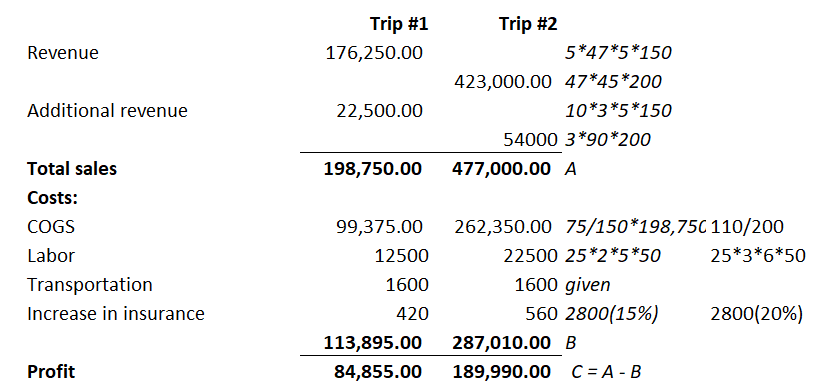Seven tips that help my students pass Core 2 of the CPA PEP program

CPA program coach and mentor Gevorg Grigoryan on quant strategies for Core 2
VANCOUVER – When you’re a student in the CPA Professional Education Program, there’s a sense of relief when you reach Core 2. Gone are the days when you meticulously quoted standards from the CPA Canada Handbook, scrutinized case appendices for Financial Reporting issues, and stressed over what Assurance and Taxation topics to study. You’re now in Core 2.
Sadly, your excitement may be short-lived. You soon notice that Core 2 cases are unintuitive, quantitative, scattered with case facts and seemingly impossible to finish on time. You may even find yourself going through your university’s management accounting (MA) notes trying to remember how to approach those MA assessment opportunities (AOs).
The technical topics in Core 2 are complex but focused. The AOs are mostly quantitative, the case facts numeric, and the exam MA-focused. I’ve seen some candidates breeze through Core 2; I’ve seen candidates struggle to have even one AO correct.
But if you’ve made it to Core 2, you have the potential to make it to the Common Final Examination (CFE) and become a Canadian accountant — a chartered professional accountant. Here are my top seven tips that will help you get through Core 2:
#1: Time management is key.
I surveyed candidates in my recent Core 2 webinar (available on YouTube) on the top challenges they face in Core 2. The number one challenge was time management. This is a challenge that you will also face, specifically with the cases. When tackling the quantitative (quants) part of the case, candidates often lose track of time and write calculations that seem to go nowhere.
My suggestion is to keep quants organized, simple, without much formatting, and based on templates. I define a template as a cookie cutter for solving CPA cases. For example, a template for solving contribution margin (CM) analysis would look like this:
 |
Click on the image to enlarge. (Courtesy: Author) |
You can build templates for each topic using practice case and mock exam case solutions, and use these as mental frameworks for approaching the quants. These will also help you organize the scattered case facts and structure your answer in an efficient way. If during the exam you face a difficult quant that doesn’t fit a template and you can’t seem to solve it, then attempt it, leave it part-way answered, and move on. It’s more strategic to provide a partial answer than to spend excessive amount of time on calculations and leave the rest of the memo blank.
#2: Highlight all the numbers.
When reading the first page of the case, which is called the narrative, it’s important that you highlight all the numbers. This includes financial data, metrics, ratios, multipliers, dates and so on. Core 2 is different from Core 1 in the sense that case facts are integrated; a case fact in the narrative could connect to multiple appendices and one appendix may impact another. By highlighting all the numbers, preferably in different colours, you organize the case facts into categories and work your way through the case faster.
#3: Show support for calculations.
The exam markers aren’t required to dig into your calculations to decipher what you wrote. Show support for your calculations to help your marker understand your thought process and award you marks. For example, annotate your calculations by labeling them as A, B, C=A+B and so on. Some students choose to copy their formulas to the adjacent cells, as shown below, and this is acceptable too.
 |
Click on the image to enlarge. (Courtesy: Author) |
#4 Study Finance topics well.
The Core 2 exam blueprint shows that MA makes up 50-70% of the exam. It’s the main competency and you will have plenty of practice. Finance makes up 15-20% of the exam, but it’s not practised nearly as much. It’s a popular competency that gets tested often and I suggest that you master at minimum the following Finance topics:
- Valuation (asset based, transaction based, market based)
- Financial analysis (free cash flow analysis, horizontal and vertical analysis, ratio analysis, trend analysis, payback, internal rate of return, net present value)
- Sources of financing (bank loans, internally generated funds, initial public offerings, venture capital, securitization, government assistance)
- Capital budgeting
- Capital structure decisions
- Investing and risk management
- Financing decisions
The Core 2 exam, similar to all CPA Canada exams, are based on the CPA Canada Competency Map. There are over seventy Finance topics that can be tested but I find the above to be the most crucial. Study these first, then expand to other Finance topics.
#5: Answer the “so what?”
A common challenge for candidates writing the qualitative analysis is that they don’t answer the “so what?” question. For example, most students would write as a disadvantage an environmentally unsustainable expansion: “Shipping from A to B would generate additional pollution.” This does not explain why it is a disadvantage and the impact it has on the company.
Instead, students should write: “Shipping from A to B would generate additional pollution, impacting the environment, when the company’s mission is to use environmentally responsible and sustainable methods, therefore this option is incongruent with the company’s goals.” The former is point form and doesn’t answer the “so what?”, while the latter is in-depth and integrates user preferences.
#6: Write assumptions.
If you notice any uncertainties in case facts, write them as assumptions in your analysis. For example, if you're given that revenue growth is 2% for years 1 and 2, and 3% for years 3 and 4, write that you assumed the revenue growth will be as projected by the users. Your memo should follow the CPA Way. It should contain an Issue statement, Analysis, and Conclusion. The assumptions go into the Analysis while the calculations go into Excel, where they should contain an appendix number, purpose and conclusion.
#7: Expect more data analytics and information services (DAIS) questions.
The Competency Map was revised in 2019 to include new DAIS competencies. Instead of creating a separate section, CPA Canada incorporated DAIS competencies in each of the existing six technical competency areas. In MA and Finance, some of the DAIS competencies include:
- Systems life cycle
- Information and decision making
- Data integrity, privacy, confidentiality, and security principles
- Information representation for decision making
- Data and information modelling
DAIS can be tested in both multiple-choice questions (MCQs) and case-based portions of the exam. For the MCQs, I suggest studying the theories behind data and information services. For the case-based portion, I suggest following the “DIIAR” template: data interpretation, implications, assumptions, and recommendation. Make sure to check my website for updates as I am working on DAIS practice drills for Core 2 to help you master this new competency.
There you have it, my Core 2 strategies. Apply the seven tips above throughout Core 2 and you will see improvement in your comprehension and achieve better exam results. You’ll be well on your way to becoming a CPA.
Gevorg Grigoryan, CPA, is an accounting manager and instructor, mentor and coach to students in the CPA program. Visit Gevorg CPA to learn more and subscribe to Gevorg’s YouTube channel to access CPA program videos.






(0) Comments